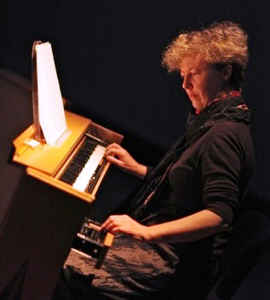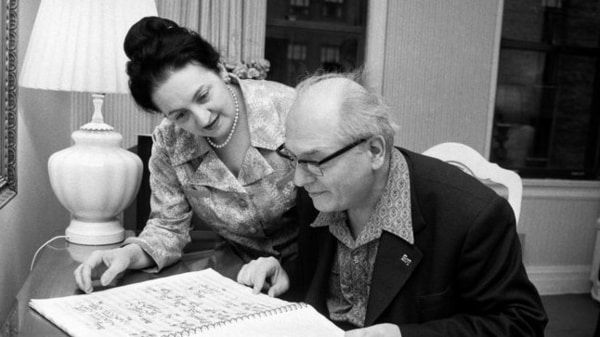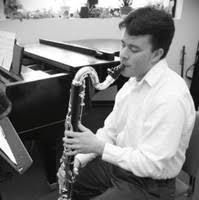the Nashville Symphony
Olivier Messiaen’s “Song of Love” at the Schermerhorn
As a proud new music nerd and relentless proponent of thought provoking art, I was thrilled to discover that the Nashville Symphony would be performing Messiaen’s Turangalîla-Symphonie during the 2018-2019 season. I bought my ticket as a part of a small subscription package nearly a year in advance and counted down the days until I would be able to witness in live performance one of the most original orchestral works of the twentieth century. Last Saturday night, May 18th 2019, after dodging the downtown landscape of discarded scooters, pedal taverns, and drunken bridesmaids, I settled into my seat eager to spend some quality time with one of my favorite composer’s best known works.

Owing to the challenging nature of the piece, Maestro Giancarlo Guerrero committed the first portion of the evening to briefing the audience on the history of the work and its composer. With the help of guest musicians Jean-Yves Thibaudet (piano) and Cynthia Millar (ondes Martenot) he introduced some of the recurring themes, specific tone colors, and programmatic elements of the work.
Thibaudet and Millar demonstrated characteristic elements of the work on piano and the less familiar ondes Martenot (an amplified keyboard instrument capable of multiple colors and flexible pitch), and Maestro Guerrero identified musical themes that could function as signposts for the audience. At seventy-five minutes long, a piece that exists as a “love song and hymn of joy, time, movement, rhythm, life and death”, does deserve a bit of a primer – and Guerrero carefully pointed out recurring themes and their significance within the work. In addition to a discussion of the musical elements, Messiaen’s compositional techniques, possible motivations, and musical aesthetic were explained.
Olivier Messiaen is one of the most original composers of the twentieth century. His music is both meticulously constructed and delightfully mystical. His music draws upon his deep catholic faith, a love of nature including birdsong, stratified rhythmic and pitch structures including non-retrogradable rhythms (palindromes) and modes of limited transposition, Eastern musical traditions, and a highly developed sense of tone color. Messiaen had synesthesia, which allowed him to perceive sounds as colors – and this directly informed many of his musical choices in regard to pitch and orchestration. All of these elements are on display in the Turangalîla-

Symphonie.
Messiaen’s conception of the work as a “song of love” may also require just a bit of backstory. In addition to the themes of religious love and overarching concepts of love, death, and renewal –Messiaen was fixated on the legend of Tristan and Isolde during the creation of this work. The story of a tragic love affair may have appealed to Messiaen as a devout married man whose musical passions were kindled by his artistic collaborator pianist Yvonne Loriod. Messiaen married Loriod after the death of his first wife, but during the time that he was composing Turangalîla she was only his partner within the realm of musical expression.
When Koussevitzky and the Boston Symphony offered a commission with virtually no limitations, Messiaen delivered a ten movement work attempting to express no less than the magic and mystery of pure cosmic love and its role in life and death, while reconciling his own intense and unfulfilled longing, all within a seventy-five minute piece of music requiring a minimum of eight percussionists, a solo piano, and ondes Martenot in addition to an expanded orchestra. So, not a bad way to spend a Saturday night.
The Turangalîla-Symphonie is an epic undertaking for an orchestra, requiring ridiculous attention to detail in order to manage the density of layered sound in the larger tutti sections and an acute sensitivity and delicacy when Messiaen allows the orchestra to whisper. From the first movement’s opening sweeping gestures leading to the initial forceful statement of the “statues” theme in the low brass, it was apparent that the orchestra was at home within Messiaen’s landscape.

The multiple layers of sound in the more robust sections of the work presented a very busy texture to listeners, but Guerrero held the true power of the orchestra in reserve for the pseudo-climactic end of the fifth movement and the hall-shaking true finale at the conclusion of the tenth. Part of the genius of the work is its stark juxtaposition of musical density and complexity, with more sparse and transparent textures. The orchestra’s ability to manage these contrasts and control the overall emotional pacing of the work led not only to the triumphant ends of the fifth and tenth movements, but most importantly to the cathartic emergence of the “love” theme in the emotional epicenter of the sixth movement (Garden of Love’s Sleep). Sharing the subdued beauty of the sixth movement of Turangalîla with the orchestra was worth the price of admission alone.
The emotional release of the sixth movement was further enhanced by the seamless integration of Millar’s ondes Martenot during the initial statement of the “love” theme. The purity and flexibility of the instrument lent an otherworldly tone color to the string section, inviting the audience on a languid and ethereal tour of Messiaen’s coloristic palette. Messiaen’s birdsong references in the piano – familiar to those who have heard Quatuor pour la fin du temps or much of his later output in the 1950’s and 60’s – grounded the movement in a slightly more earthly realm, but it is difficult to describe the performance of this music as anything other than celestial. This material is revisited and expanded in the climax of the work, perhaps suggesting Messiaen’s evaluation of the transformational power of love.
In both the intimate settings of the sixth movement and the more virtuosic displays throughout the work, Thibaudet was masterful. His fluid technique at the keyboard made some of Messiaen’s thorniest lines sound effortless. It was evident that he has lived with this work and understands its nuances, allowing him to coax the fullest musical expression out of every note.
Maestro Guerrero’s commitment to the performance of modern music is most appreciated here in Nashville. The orchestra’s presentation of the Turangalîla-Symphonie is a continuation of the organization’s promotion of 20th century masterworks and cements its position as a champion for new music. I can’t think of a better role for an orchestra located in the heart of the Music City.





[…] on the ondes Martenot and Yuja Wang at the piano (Nashville last performed it in 2018, review here). Part of the Boston Symphony’s “Music for the Senses” series and performed exquisitely by […]